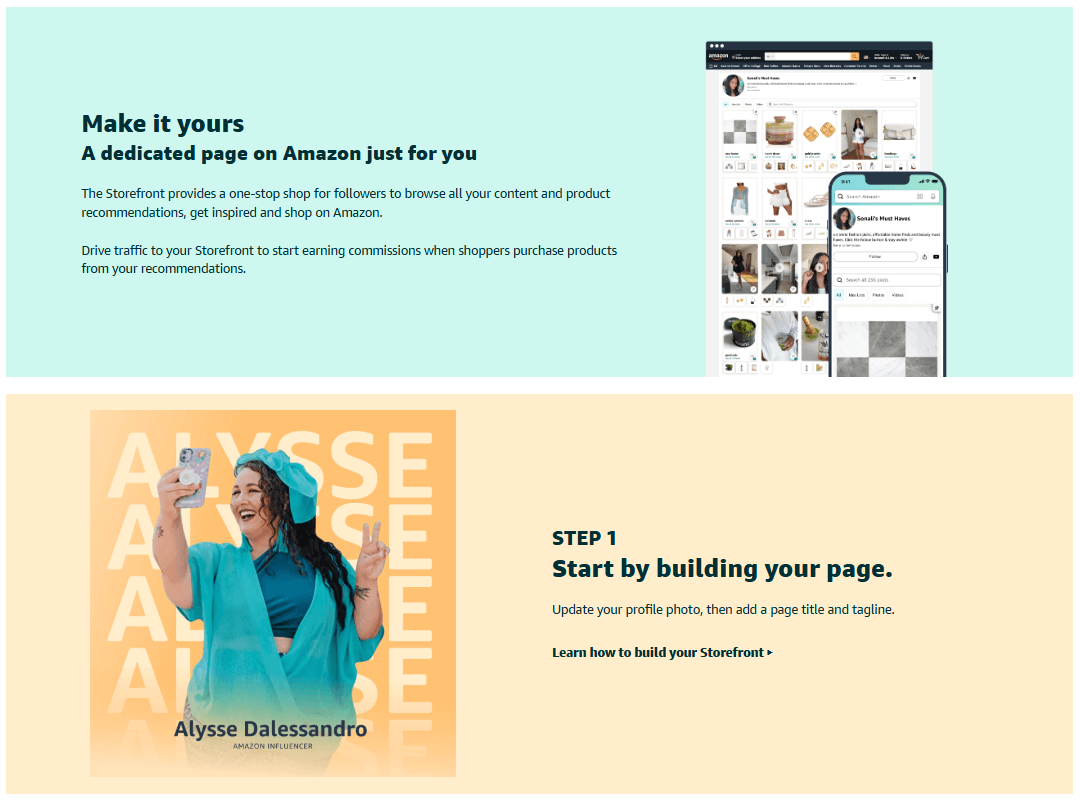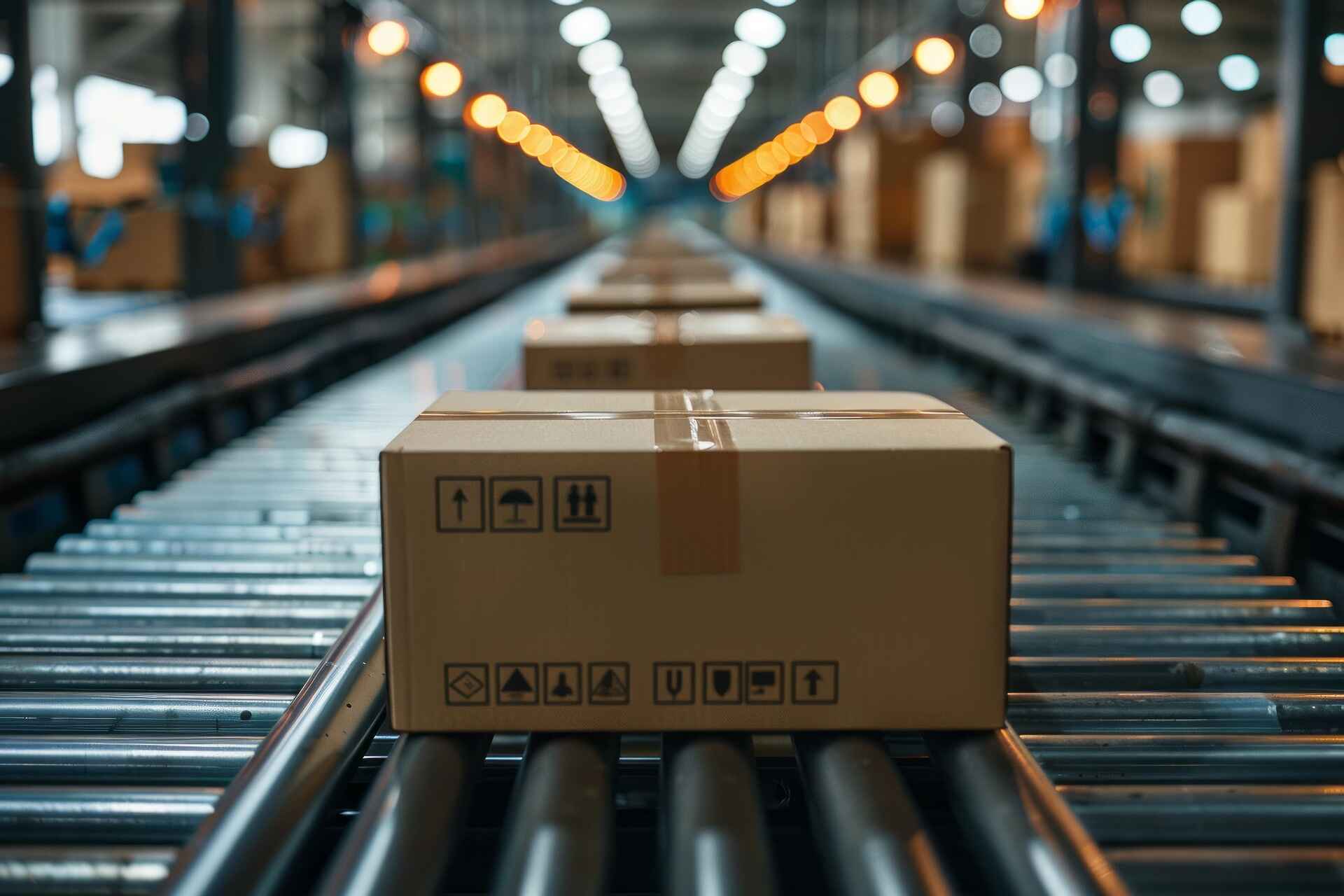Selling on Amazon FBA in 2025 is like joining a marathon where the finish line keeps moving. New sellers are jumping in every day, ad costs are climbing, and the algorithm has developed a mind of its own.
Customers, on the other hand, now expect fast shipping, better visuals, detailed reviews, and listings that answer their questions before they even ask. That means whatever worked last year—or even last quarter—might be stale now.
If your sales have plateaued or dipped, you’re not doing anything wrong. You’re just playing in a faster, tougher field. Guesswork doesn’t cut it anymore.
-
Optimizing for Amazon’s A10 algorithm requires more than keywords—it demands listings that convert through better titles, bullet points, and backend terms.
-
High-quality images, infographics, and videos build trust fast and are essential for boosting conversion rates in 2025.
-
Coupons, Lightning Deals, and bundled promotions increase visibility, drive clicks, and improve average order value without hurting your margins.
-
Long-tail keyword targeting and smarter PPC campaign structuring can significantly lower ad costs while increasing high-intent traffic.
-
External traffic from TikTok, YouTube, and blogs paired with solid review strategies and branding tools helps listings rank higher and convert better.
You need strategies built for how the platform works today, backed by real-world results, current data, and what actually moves the needle when you’re competing against thousands of similar products.
I’ve worked with clients who started out completely buried—no sales, poor visibility, and frustrated from watching their competitors thrive. But once we focused on the right strategies and made small, smart changes, everything shifted.
Some of them are now running seven-figure Amazon stores. These 11 methods helped them survive and grow with clarity and confidence.
I’ll teach you exactly how you can do the same.
1. Optimize Your Listings for Amazon’s A10 Algorithm
Amazon’s A10 algorithm now favors relevance, external traffic, and conversion rates more than it ever did in the A9 era. That means your listing needs to do more than simply include the right keywords.
It has to convert, and quickly. The algorithm tracks how well your listing performs when shoppers land on it. Are people clicking and bouncing? Or are they clicking, reading, and buying?
If you’re stuffing keywords without giving shoppers a reason to stay, you’re setting yourself up to be buried. Make sure your title is keyword-rich but clean. That means leading with the most important keyword phrase, followed by clear, compelling product identifiers—brand name, quantity, size, or use case.
For example, instead of saying “Stainless Steel Water Bottle 750ml,” try “Leakproof Stainless Steel Water Bottle – 750ml Insulated, BPA-Free Travel Flask by [Brand Name].”
Use bullet points. They’re your chance to connect with the buyer’s mindset. Highlight real benefits and solve actual problems. I usually advise sellers to format these like mini stories.
Don’t just say “Durable material.” Say, “Built with reinforced nylon so it won’t tear when you’re 30 minutes into a tough hike and miles away from the trailhead.” That’s how you make your product relatable.
Descriptions are also prime real estate. This is where you answer unspoken questions and address hesitation. Use this space to explain what makes your product different and why it’s worth the price.
And if you’re not adding secondary keywords naturally into your description, you’re leaving discoverability on the table.
Finally, don’t overlook backend keywords. They help you show up for long-tail searches like “ergonomic back pillow for tall people” or “pet-friendly indoor mosquito trap.”
These kinds of keywords may not bring in huge traffic on their own, but they can drive steady, high-converting clicks that competitors are completely missing.
When I worked with one client selling kitchen gadgets, simply reworking their bullet points to sound more like benefits than technical specs led to a 16% jump in conversions within a week. That’s how powerful listing optimization can be, especially under A10.
2. Upgrade Your Product Images and Add Videos
You have about 1.7 seconds to grab someone’s attention. If your first product image doesn’t do that, you’re done. It’s that fast. People scroll, skim, and make snap decisions based on visuals, especially when they’re shopping from a phone screen with five other tabs open.
In 2025, customers rely more on visual confirmation than ever. High-resolution images and videos can significantly influence purchasing decisions, as they provide customers with a better understanding of the product, leading to increased trust and higher conversion rates.
That means your photos do the heavy lifting before your title or bullet points even get a chance. This is why I always tell my clients that strong images are your first conversion tool, not your ad copy.
What works now? A mix of high-resolution main images, infographic images with benefits clearly highlighted, and lifestyle shots that show your product in use. Your main image should be crystal-clear and zoom-friendly with a plain white background.

But after that, the rest of your image set should help shoppers imagine how they’ll use the product in real life. If you’re selling a collapsible water bottle, show it folded inside a small backpack pocket. If it’s a kitchen tool, show someone using it with one hand while cooking. Make it feel effortless and practical.
Infographic-style images with callouts like “BPA-Free Plastic,” “Leakproof Seal,” or “Fits in Any Cup Holder” give quick answers to common buyer questions. And trust me, buyers are scanning for those details more than they read full descriptions.
If you’re brand-registered, you should absolutely add videos. These don’t have to be studio-quality productions. A smartphone, natural lighting, and a short 30–60 second walkthrough can do wonders. I had one client—a small home office brand—who was struggling to convert traffic.
After we added a simple demo video showing how to assemble and use their desk organizer, their conversion rate shot up by 22% in just two weeks. No ad spend increase. No listing overhaul. Just a video that made the product feel real and easy to use.
If you’re not using visuals to sell the experience of your product, you’re depending too much on words. And in a visual marketplace, that’s a risk you don’t need to take.
3. Use Coupons, Lightning Deals, and Promotions
People love a deal. Even if it’s a few cents off, the perception of savings boosts click-through rate. And Amazon shoppers instantly notice that little green coupon box and gravitate toward it. It signals value, and more importantly, it stands out in a crowded search result.
Jungle Scout highlights that incorporating a 5% or 10% discount via coupons can make product listings stand out, potentially increasing their appeal to customers and improving conversion rates. That’s not a minor lift. It’s a solid edge, especially when you’re trying to gain visibility against established competitors.
I’ve seen sellers get significantly more clicks and sessions on listings that hadn’t changed in months, all because they activated a 5% coupon. The product didn’t become better overnight. It just became more clickable.
Use Lightning Deals strategically, not as a desperation tactic, but to trigger algorithmic boosts during slow periods or right before key shopping seasons. These deals create urgency. They give your listing a temporary spotlight on Amazon’s deals pages, which can lead to a flood of impressions and a spike in conversions if your price and images are dialed in.
One client of mine sold through an entire month’s inventory in two days simply by timing a Lightning Deal during the lead-up to Mother’s Day. They also gained 73 new reviews as a bonus from that one promo window.
Promotions tied to complementary items (buy 2, get 10% off) can increase your average order value and reduce customer acquisition cost. Think about what your customer would logically pair your product with.
If you’re selling yoga mats, offer a small discount when someone adds a water bottle or yoga strap. These kinds of promotions boost sales, make the shopping experience smoother, and increase the perceived value of your brand.
Discounts don’t mean you’re devaluing your product. When used with purpose, they’re tools to boost visibility, win the algorithm’s favor, and help buyers feel like they’re getting a win, without you losing control of your pricing.
4. Use Amazon PPC Smarter, Not Harder
Amazon ads have gotten more expensive. Every click is a little pricier, and every mistake costs more than it did last year. If you’re still setting and forgetting campaigns, you’re bleeding money—and probably wondering why your ACoS keeps climbing without a matching spike in sales.
To stay competitive in 2025, you need a structure that does the thinking for you and lets you spend where it matters. Here’s a smarter flow I recommend to all my clients:
- Start with auto campaigns. Let Amazon do the initial digging. This helps you find which search terms customers are actually using, not just the ones you think they’re using.
- Once you start seeing conversions, move those winning terms into manual campaigns. This gives you tighter control over bids and allows you to separate high-performing keywords by match type (exact, phrase, broad).
- Set negative keywords to stop wasting money on irrelevant or low-converting searches. One client selling baby carriers was accidentally spending hundreds on clicks for “dog carriers”—because they never blocked that keyword.
In 2025, long-tail keywords like “wireless earbuds for gym workouts” are outperforming short, broad phrases like “earbuds” or “Bluetooth headphones.”
Why? Because long-tail searches come from buyers who know what they want. They’re ready to purchase. These are the clicks that turn into orders without draining your budget.
Tools like Helium 10, Data Dive, and Amazon Brand Analytics make it easier to spot these high-intent, low-competition keywords. I recently helped a client who was spending over $1,000/month on generic terms with low ROI.
We trimmed their ad structure, focused on long-tail variations, and within three weeks, their ACoS dropped by 28%, and their total sales actually went up.
PPC in 2025 isn’t about who has the biggest budget. It’s about who has the sharpest strategy. Treat your campaigns like assets. Monitor them. Refine them. Let the data tell you what to do next.
5. Drive External Traffic to Your Listings
Amazon now rewards sellers who bring in external traffic. And not just any traffic—high-quality traffic that converts. The A10 algorithm favors listings that perform well beyond Amazon’s walls, especially when the incoming traffic leads to purchases.
This means you have a big opportunity to stand out by doing what most sellers still avoid: sending shoppers from other platforms directly to your Amazon product page.
Start with platforms that already have your audience’s attention. TikTok, for example, has become one of the fastest-growing channels for product discovery. Short, authentic videos showcasing your product in real use cases—especially those made by creators or influencers—build trust and curiosity fast.
I had a client in the skincare niche who worked with five micro-influencers to post honest, unscripted product reactions. With no paid ads, just pure organic traffic, their sales jumped 19% in under 30 days. And the only change we made was bringing the right traffic in from TikTok.
YouTube is still powerful, too, especially for evergreen, honest product reviews or side-by-side comparisons. These videos keep working long after they’re uploaded. Pinterest works great for lifestyle and aesthetic products.
If your product photographs well—think home décor, planners, beauty tools—it can thrive on visual boards. I’ve seen handmade and wellness brands build steady Amazon traffic just by pinning helpful, SEO-optimized content regularly.
Don’t overlook the value of blog posts. Whether it’s your own site or an affiliate network, a well-written article optimized for Google SEO can drive consistent clicks to your Amazon listing.
Use Amazon Attribution links so you can track which of these sources are bringing traffic that actually converts. You want people who click, stay, and buy.
In short, Amazon likes sellers who know how to drive their own traffic. It takes pressure off their internal search engine and gives your listing more weight in the algorithm. It’s a win-win when you know where your audience already spends time and guide them straight to your product with purpose.
6. Get More Reviews the Right Way
You already know reviews drive conversions. They’re one of the biggest trust signals on Amazon. But in 2025, buyers are savvier. A bunch of generic five-star reviews won’t cut it—they’re easy to spot, and even easier to ignore. Shoppers want proof that your product has helped real people solve real problems.
Here’s what works:
- Use Amazon’s “Request a Review” button after delivery. It’s quick, compliant, and often overlooked. I’ve seen sellers boost their review rate by simply clicking that button every few days as part of their routine.
- Set up an email sequence through your FBA software (like FeedbackWhiz or Jungle Scout’s Review Automation). The key is to keep it short, friendly, and aligned with Amazon’s Terms of Service. Thank them for their purchase, offer helpful tips, and politely ask for a review. You’re not begging—you’re making it easy for happy customers to share their experience.
- Enroll in Amazon Vine, especially for new SKUs. If you’re brand-registered, this tool lets trusted reviewers test your product in exchange for feedback. It’s one of the fastest, most reliable ways to collect early reviews that are detailed and trustworthy.
According to BrightLocal, 87% of consumers trust online reviews as much as personal recommendations. That trust multiplies when your product page includes photo reviews, honest pros and cons, and stories from real customers who used your product in real situations.
If someone sees a review that says, “I bought this lunch box for my 8-year-old who breaks everything—and it’s still going strong after two months,” that’s more powerful than ten generic five-star ratings with no context.
One of my clients, who sells pet products, started including a short product-use tip in their follow-up emails, like how to get the best fit from their adjustable harness.
Not only did this reduce returns, but it also sparked more reviews that mentioned how thoughtful and helpful the brand was. Little touches like that can build serious credibility, and credibility sells.
In 2025, your reviews don’t just need to be positive. They need to be personal, useful, and real. Focus on creating a great customer experience, and the reviews will come organically, consistently, and in a way that builds long-term trust.
7. Launch or Relaunch with Strategic Giveaways and Rebates
A product launch without momentum is like shouting into the void. You might have a great product, but if no one sees it, no one buys it. In 2025, ranking boosts come from high conversion velocity, not hacks, not shortcuts. It’s all about how quickly your listing can generate traffic, clicks, and purchases that actually stick.
You can still use giveaways or rebates, but they must comply with Amazon’s updated terms. The days of shady review groups and fake rebate schemes are over—and that’s a good thing. Now, it’s all about driving authentic interest from people who would realistically buy your product anyway.
Platforms like Rebaid make it easier to offer legitimate, compliant rebates to real customers. You can also tap into influencer micro-campaigns—short-term collaborations with creators who already have niche audiences. These partnerships can drive curious, engaged traffic to your listing while generating buzz and early sales.

One of my clients had an old kitchen accessory collecting dust on page 9. We relaunched it with a 3-week plan: limited-time rebates, a Vine enrollment for reviews, and a handful of micro-influencers showing the product in action.
The result? Page 1 ranking in under a month, and the reviews that followed were natural, photo-rich, and full of user-generated content we could repurpose.
If you’re launching a new SKU or trying to revive an old one, think beyond just listing and hoping. Create a mini event. Stack your tactics. Give customers a reason to act now while building that early momentum that the algorithm rewards.
In 2025, slow launches stall out fast. But when you combine visibility with value and authenticity, your listing gets noticed and stays noticed.
8. Bundle Products to Increase Average Order Value
Bundling is a smart way to differentiate and dominate niche keywords. It helps you target long-tail searches like “starter set for new phone” or “gift set for beginner bakers” while also increasing the amount each customer spends in a single order.
When done right, bundling turns basic listings into high-value solutions, and that’s what customers are really shopping for.
Think beyond the obvious. Instead of just pairing a phone case with a screen protector, offer a “first-time phone kit” that includes a case, wipes, a kickstand, and a cable organizer.
Beyond selling accessories, you’re solving a full problem. That makes your listing more clickable and more attractive to customers who are looking for simplicity and value in one go.
Amazon favors bundled listings with strong value propositions, especially in low-competition niches. That means if your bundle clearly saves buyers time, money, or effort, it’s more likely to rank higher in search.
I had one client in the baby products space who created a “newborn bath essentials bundle”—towel, thermometer, brush, and shampoo dispenser—all small, low-cost items.
On their own, none of these products stood out. But as a bundle, they started ranking for gift-related terms and doubled their average order value in less than 60 days.
And if you’re worried about inventory logistics, use Amazon’s virtual bundle feature. It lets you combine two or more FBA products into a single offer without repackaging. It’s fast to set up, easy to test, and a great way to see what product combinations your customers respond to best.
Bundles help you compete on value, not just price. And in 2025, when shoppers are scanning dozens of options in seconds, anything that makes their decision easier gives you an edge.
9. Optimize Fulfillment and Inventory Planning
Amazon’s 2025 FBA inventory rules are stricter. Run out of stock, and you not only lose sales, you lose rank. The algorithm notices fast. Your listing drops in visibility, and once it falls off the first page, getting it back up takes time and effort.
On the flip side, if you overstock, you’re penalized with storage fees that quietly eat into your margins every single month.
This is where accurate demand forecasting makes all the difference. You need to know when your best sellers are likely to spike and when to slow down restocks on slower-moving SKUs.
I’ve seen sellers go from healthy profits to negative cash flow just because they over-ordered one product while ignoring seasonal trends on another.
Amazon’s own inventory planning tools are a good starting point. They give you real-time data on sell-through rates, restock suggestions, and storage limits. But if you’re managing multiple SKUs or experiencing growth, you’ll want something more flexible.
Tools like SoStocked allow you to plan inventory around promotions, product launches, lead times, and even supplier delays. One of my clients used SoStocked to prevent over-ordering a product they thought would trend over the holidays.
Turns out, the demand peaked early, and their tighter forecast saved them from $1,200 in extra storage fees.
To keep your FBA business healthy, maintain a strong IPI score, aiming for 400 or higher gives you more flexibility. If your score drops too low, Amazon restricts your restock limits, which can seriously hurt your sales potential.
And when fulfillment bottlenecks happen—as they often do during Q4—consider using 3PLs (third-party logistics providers) or supplement with FBM (Fulfilled by Merchant) to stay in stock and avoid delays.
Selling on Amazon FBA in 2025 means managing your inventory like a hawk. When you plan smarter, you protect your rankings, your margins, and your ability to scale without surprises.
10. Analyze Competitors and Fill Gaps
Every top seller is leaving a gap you can fill. Even the best listings have weak spots—missed keywords, clunky photos, pricing issues, or features customers are clearly asking for but not getting. Your job is to study those gaps and turn them into your advantage.
Start with tools like Keepa to track price drops and spot when your competitors are discounting, restocking, or losing momentum. If you see a pattern where a product dips in price every 45 days, it may be part of their sales strategy, or it might signal slow-moving inventory. Either way, that’s information you can use.
Then dive into Helium 10 to scan listing keywords. You’ll often find that top sellers rank well, but they still miss certain high-intent long-tail terms. That’s your entry point.
You can also use Xray to estimate sales volume, pricing, and competition levels, especially helpful if you’re deciding which niche to target or which variation to launch next.
Now here’s where it gets interesting: look at their reviews. This is where the gold is. Don’t skim—read the bad ones and the 3-star reviews, especially. That’s where customers say what they really think. Find repeated complaints. Then turn those into selling points in your own listing.
If a popular camping chair has 300 reviews complaining about “awkward folding,” your listing should highlight “Quick-fold technology for hassle-free setup.” And better yet, show it in a photo or short video. You’re not copying their product—you’re answering their buyers’ frustrations.
I’ve helped clients boost conversions by doing nothing more than filling in the blanks their competitors left wide open.
One seller in the home fitness category reworded their bullet points to highlight the exact problems reviewers kept bringing up in competing products—flimsy handles, unclear instructions, missing accessories. Their listing conversions improved within a week, and they started climbing the rankings for multiple mid-level keywords.
This kind of competitor analysis doesn’t take hours. But it does require attention. If you slow down and listen to what customers are already saying, they’ll practically write your sales copy for you.
11. Build a Brand, Not Just a Listing
Amazon is leaning heavily into brand-building features. If you’re not using Brand Registry, you’re leaving tools (and trust) on the table. In 2025, shoppers are paying closer attention to branding—logos, product presentation, and the overall feel of your listing matter more than ever.
When a customer clicks into your page and sees consistent visuals, clear messaging, and helpful content, they start to view your product as part of something bigger—something credible.
With A+ Content, you can build visually compelling product pages that go far beyond plain text and bullet points. This is where you highlight your product’s benefits, share your brand story, compare SKUs, and answer objections visually.
Think clean layouts, icons, charts, and lifestyle photos that guide the buyer toward “yes” without feeling pushed. I’ve seen sellers lift their conversion rates by as much as 15–20% simply by switching from a basic description to a well-designed A+ layout.
With an Amazon Storefront, you control the shopping experience. Instead of sending traffic to a crowded marketplace, you can send them to a curated environment with your full product line, collections, and seasonal offers.
It feels more like a brand website, but without making the shopper leave Amazon. One of my clients built a Storefront focused on pet grooming essentials, and within three months, their returning customer rate increased noticeably.

People trusted them more because it felt like a professional brand, not just a seller pushing one product.
With Brand Analytics, you see what customers are searching for and how they behave. That kind of insight helps you adjust your listings, build better bundles, and plan your next product based on real data, not assumptions. Knowing what keywords are converting across your catalog helps you double down on what works.
More importantly, a brand gives you pricing power. You’re no longer stuck in the race to the bottom with sellers who cut prices to stay afloat. A brand gives your product a personality and a reason to charge what it’s worth.
It keeps you from becoming just another cheap option in a saturated market. When customers remember your brand—and feel good about buying from it—they come back, and they tell others. And that’s where long-term growth really starts.
So, What Should You Do Now?
If your Amazon FBA sales are flat, stagnant, or declining in 2025, you’re not alone. But you do have options. You can either keep hoping your current tactics will start working again, or you can evolve with the platform.
I’ve helped clients go from losing money on ads to becoming top sellers in their niche—but only after they committed to real strategy, consistent optimization, and treating their Amazon store like a serious business, not a weekend hustle.
My opinion? If you want to succeed on Amazon FBA in 2025, stop chasing trends and start mastering fundamentals. Amazon rewards those who understand its ecosystem and show up every day ready to improve.
Pick two or three of these strategies and implement them this week. You don’t need a miracle. You need momentum. And that starts with taking action today.







